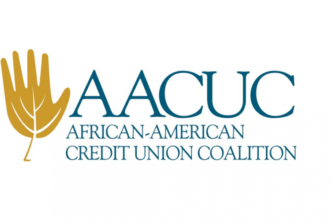By Megan Thomas
Kudulis, Reisinger and Price
The credit union industry has recently experienced a sharp increase in brand trademark infringement issues. The growth of online marketing, online searches and mobile applications has expanded marketing opportunities. The negative side of such exposure is that, where once out-of-state financial institutions had little concern with credit unions, geographic barriers are fading. Credit unions now find themselves competing to protect brand imaging. The best protection for your brand image can be found in trademarking
Trademark registration of your marks is essential for protecting an existing brand or ensuring a successful launch of a rebrand. Federal trademark registration enables you to protect your mark from use by others and entitles you to certain infringement damages not available under state trademark laws. Federal or state registration of your mark can also be vital in defending against infringement claims.
When rebranding, developing a protected brand image for your credit union is a two-pronged approach. First, a trademark search should be done when you are considering a new name, logo, slogan or product name. Some marketing firms will conduct a basic search, but that search is generally not sufficient for trademark purposes. The second is to register any name, logo, slogan or product name with the United States Patent and Trademark Office. When filing for federal trademark registration, the actual registration process provides numerous opportunities for the public to object to registration of your mark.
When a credit union is considering changing names, the credit union can file for federal trademark registration of the new name prior to using it – what is commonly called an Intent-to-Use application. There are two benefits to this process: 1) if a third party is going to object to the credit union’s new name, they will likely do so while the credit union’s mark is working its way through the trademark registration process; and 2) if the credit union obtains federal trademark registration for its new name, there is far less risk of another financial institution objecting to the credit union’s use of that name because federal registration of the new name provides you with a stronger defense against any infringement claims.
Businesses that fail to register trademarks are often unaware of existing marks held by others. Infringement upon existing filings exposes the infringing party to lawsuits that can result in costly revisions to your brand image and marketing material. If the credit union’s new name is found to be infringing of another financial institution’s name, the credit union could be forced to select a new name. We have witnessed unfortunate outcomes from re-branding, including credit unions that were forced to change their name or restrict its marketing to avoid infringement. These outcomes could have been mitigated or prevented if the credit union had consulted for trademark guidance during the re-branding process.
Once you obtain trademark registration, it is important to maintain the strength of your mark through monitoring and defending your mark against third party infringement. Failure to protect your mark against infringement can lead to a weakening of your rights and, eventually, a loss of trademark registration. Monitoring for trademark registration applications of similar marks is the best preemptive measure to stop infringing use. If an infringing or potentially infringing mark is found, sending a cease and desist letter to the infringing third party is often an effective means of defending your mark and can help avoid expensive litigation.
Along with registration and monitoring your marks, it is important to maintain your registrations. Trademarks are a valuable asset, but they require additional filings and renewals to maintain the registrations. Unfortunately, registrations are often lost simply because a filing deadline was missed. Renewals are due every 10 years for federal registrations, and between 6 to 10 years for state registrations, depending on the state of registration. The United States Patent and Trademark Office and most states do not provide courtesy reminders when a trademark registration is about to expire, so it is crucial that you or your trademark attorney track renewal deadlines for each of your marks.
Protecting your credit union’s brand is essential in today’s environment. The above tips should greatly assist with ensuring your credit union develops a strong and long lasting image.
You can reach Megan Thomas at mthomas@krpfirm.com





